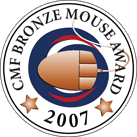




| Home | Hearings | Newsroom | Issues | About | Legislation | Blog |

E-Newsletter
Search


How to Apply for Federal Student Loans & Grants
Deadlines for accepting college admissions and financial aid package offers are coming up soon. Whether this is your first or last year of paying for college, you may have questions about how to get affordable financial assistance during this time of turmoil in the U.S. credit markets. The Committee has been working on measures to help American families afford higher education -- answers to some frequently asked questions are below.
- Why max out on federal loans before taking out a private loan? »
- What kind of aid can the federal government provide? »
- How do I apply? »
- When must I apply? »
- Other information: Applying for scholarships »
- What else is the Committee doing to help make college more affordable? »
Why max out on federal loans before taking out a private loan?
Thanks to the College Cost Reduction and Access Act, which was signed into law in September 2007, federal interest rates on subsidized federal Stafford Loans for undergraduates will drop to 6% on July 1, 2008 from the previous rate of 6.8%. This interest rate cut will save the typical student borrower beginning college in 2008 about $2,570 over the life of his or her loan. All Stafford Loans made to graduate students and unsubsidized Stafford Loans made to both undergraduate and graduate students will carry a fixed 6.8% interest rate.
Both federal loan interest rates provide far greater savings over more expensive private loans, whose interest rates can run as high as 19%. Another reason to choose federal loans over private loans is that private loans often have variable rates that can result in an unexpectedly high monthly payments. In contrast, federal loans will stay fixed at the same low rate over the life of the loan.
Rates on subsidized federal Stafford Loans will continue to drop over the next few years: to 5.6% for loans disbursed between July 1, 2009 and June 30, 2010; to 4.5% for loans disbursed between July 1, 2010 and June 30, 2011; and to 3.4% for loans disbursed on or after July 1, 2011.
What kind of aid can the federal government provide?
Aside from federal work-study programs, the federal government offers grants and loans to students and their parents.
Grants (Financial aid that is not repaid.)
- TEACH Grants: These grants, which were newly created by the College Cost Reduction and Access Act, provide upfront tuition assistance to qualified undergraduate students who commit to teaching in public schools in high-poverty communities and high-need subject areas. Undergraduate recipients may receive $4,000 a year, with a maximum of $16,000 over four years. (Graduate recipients may receive a maximum of $8,000 over two years.)
- Pell Grants: Pell Grants are awarded usually only to undergraduate students who have not earned a bachelor's or a professional degree. The College Cost Reduction and Access Act increased the maximum Pell Grant scholarship by $1,021 over the next five years. The maximum award for the 2008-09 award year (July 1, 2008 to June 30, 2009) is $4,731.
- Other grants
Loans (Financial aid that must be repaid with interest.)
-
Stafford Loans:
Subsidized Stafford Loans' interest rates will drop to 6% on July 1, 2008 for loans made to undergraduate borrowers, thanks to the College Cost Reduction and Access Act. A subsidized loan is awarded on the basis of financial need. If you're eligible for a subsidized loan, the government will pay (subsidize) the interest on your loan while you're in school, for the first six months after you leave school, and if you qualify to have your payments deferred.
Unsubsidized Stafford Loans carry a rate of 6.8% for undergraduate borrowers. Unlike a subsidized loan, you are responsible for the interest from the time the unsubsidized loan is disbursed until it's paid in full. You can choose to pay the interest or allow it to accrue (accumulate) and be capitalized (added to the principal amount of your loan). Capitalizing the interest will increase the amount you have to repay. - PLUS Loans for parents
- PLUS Loans for graduate and professional degree students
To get federal student aid, you'll need to fill out a
Free Application for Federal Student Aid (FAFSA) form. The FAFSA is also used to apply for aid from your state or school. To apply, you'll need your Social Security Number, driver’s license, income tax returns, bank statements, and investment records. (Congress is working to simplify this process: the College Opportunity and Affordability Act, which passed the House on February 7 by a vote of 354-58, includes provisions to simplify the FAFSA.)You may submit your FAFSA as early as January 1 of each year. It's best to file early since deadlines may vary for state, school and private aid. Be sure to check with your state, school, and lenders for their individual deadlines.
Other information: Applying for scholarships
Additional resources about scholarships, including general information, a scholarship checklist and a free scholarship search service, are available at
Student Aid on the Web.What else is the Committee doing to help make college more affordable?
In addition to getting the College Cost Reduction and Access Act signed into law, providing the single largest increase in college aid since the GI bill at no new cost to taxpayers, the Committee worked to get the College Opportunity and Affordability Act passed in the House. This bill addresses the soaring price of college, and removes other obstacles that make it harder for qualified students to go to college. The Ensuring Continued Access to Student Loans Act of 2008 was signed into law on May 7, 2008. This measure provides new protections, in addition to those in current law, to ensure that families can continue to access the loans they need to pay for college.
(Source: ed.gov)
2181 Rayburn House Office Building | Washington, DC 20515 | t: 202-225-3725
Site Map | Privacy Policy | Contact Us | Republican Views